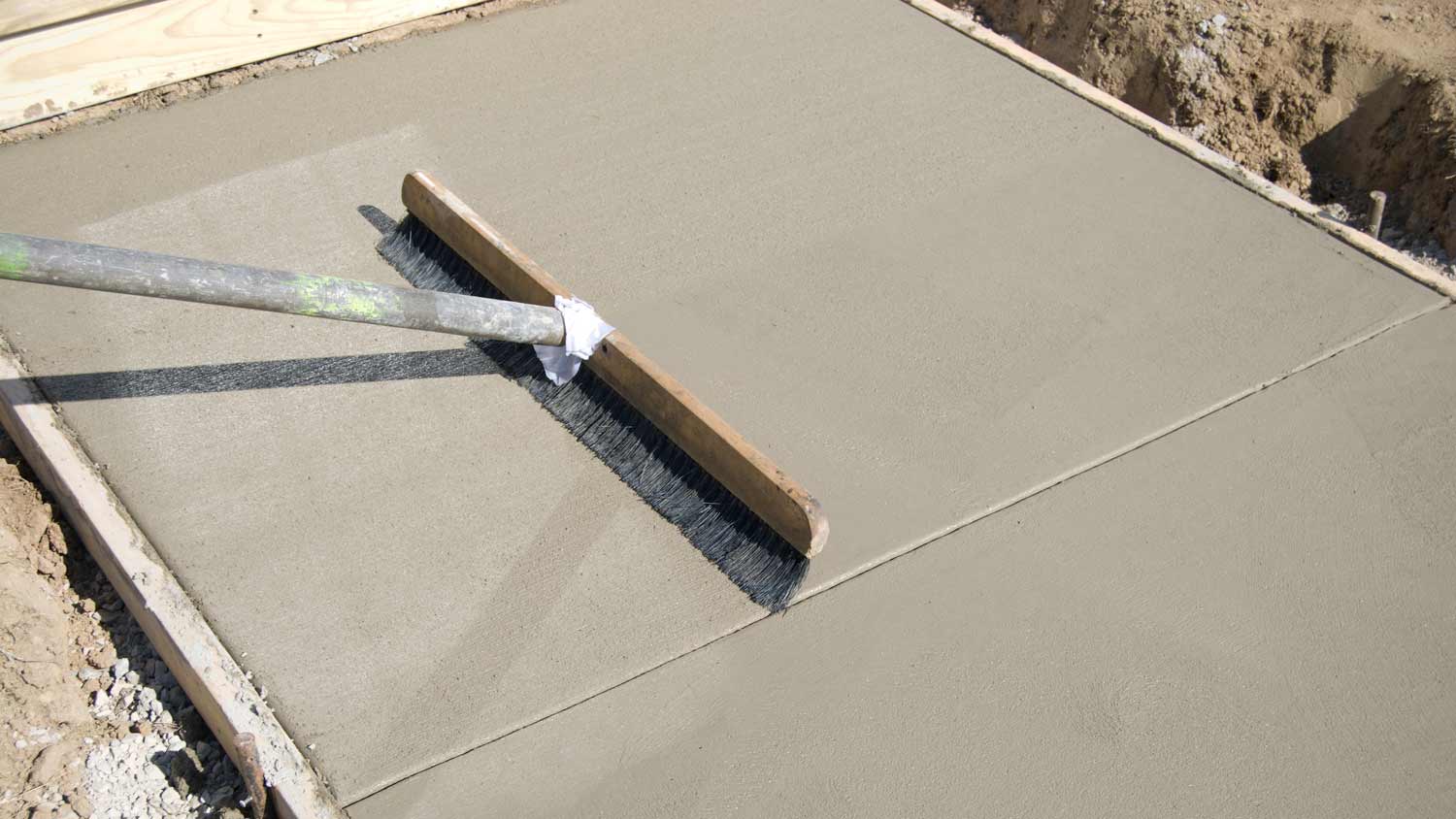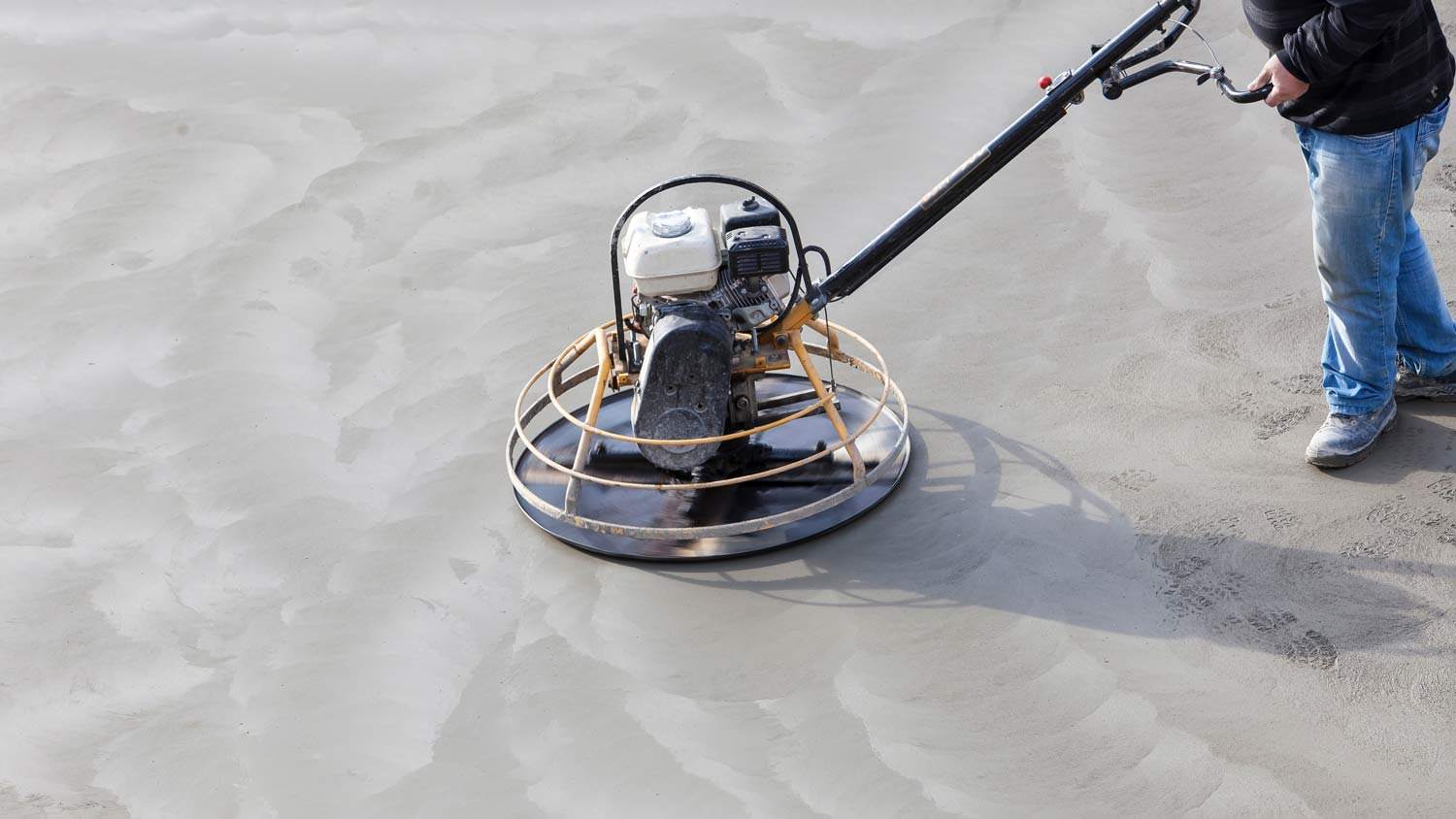How Long Does Concrete Resurfacing Last?
How long before your concrete resurfacing cracks under pressure?


Concrete resurfacing is more affordable than replacing your slab, and it makes for a much more professional, polished look than simply patching the old concrete and sealing cracks. But how long does concrete resurfacing last, and does it provide more value in the long term than concrete replacement? We’ll discuss all of that and more in this quick guide.
How Long Does Concrete Resurfacing Last?

Concrete resurfacing lasts for an average of eight years, and most homeowners see a lifespan of between five years and 12 years. It’s possible to get 15 years or more from your concrete resurfacing with proper maintenance, but weather and soil conditions can cut that short.
Factors Influencing How Long Concrete Resurfacing Lasts
There’s a range for your concrete resurfacing lifespan because a few factors can affect how long it lasts and looks good.
Climate
Climate is the biggest factor to consider when estimating the lifespan of concrete resurfacing. Concrete driveways, sidewalks, walkways, patios, and pool decks will see constant exposure to rain, snow, and UV radiation, all of which can weaken your concrete over time. In extreme climates, expect concrete resurfacing to last five to 10 years.
Soil Conditions
Your concrete—and the resurfacing material above it—are only as strong as the soil below them. Sandy soil that erodes easily and clayey soil that expands and contracts rapidly in response to moisture can leave your slab without the support it needs. When the concrete shifts, the resurfacing material can crack, and that damage limits the lifespan of your concrete resurfacing.
Usage
How you use your concrete slab can affect how long your resurfacing lasts. Walkways and patios that don’t see heavy vehicle traffic are less likely to crack from the weight above or uneven soil support below.
Maintenance
Finally, how well you maintain your concrete resurfacing will play a role in its lifespan. Regular pressure washing, avoiding deicing salts in the winter, and resealing the surface every two to five years will help your surface last longer, sometimes more than 15 years.
Signs It’s Time to Resurface Your Concrete
Resurfacing concrete is a cosmetic repair, so you’ll know when it’s time to resurface by looking at the existing concrete. Look for the following signs of aging or unappealing concrete.
Cracks in the surface
Concrete discoloration, fading, or staining
Crumbling concrete
If you have more severe damage, like sinking concrete, you’ll need other repairs before it’s safe to resurface. Speak with a professional about mudjacking and other concrete leveling methods before hiring a concrete flooring company near you for resurfacing.
How to Maintain Concrete Resurfacing

Concrete resurfacing is as easy to maintain as an unsurfaced concrete slab. There are just a few things to remember to keep your resurfaced concrete looking good.
Reseal once every two to five years
Power wash as needed or at least once a year
Be diligent about sealing hairline cracks as they form
Warranties for Concrete Resurfacing
Some concrete resurfacing professionals will offer a warranty for the quality and longevity of their work. On average, these last for one to two years, so while they’ll cover you from major contractor mistakes, they won’t mean much over the lifespan of your concrete resurfacing.
Repairing Concrete vs. Resurfacing
Repairing concrete is more affordable than resurfacing, averaging $1,800 for a concrete driveway, while resurfacing would cost $2,000 or more. However, resurfacing makes your concrete look like new, while concrete repair can leave visible patches that can be unsightly.
Frequently Asked Questions
The biggest downside to resurfacing concrete is its lifespan. Concrete resurfacing lasts for five to ten years, on average, while a new concrete slab would last for 20 to 30. The cost of concrete resurfacing is much lower, but you get more value from full replacement. Resurfacing also doesn’t address any underlying issues with your slab, so you may need additional repairs, like mudjacking.
Concrete resurfacing costs an average of $2,000, and most homeowners pay between $1,000 and $5,000, depending on the size of the slab. The average cost per square foot for concrete resurfacing is between $3 and $5, although the price can reach up to $20 if you choose a stain color or stamped concrete.
Concrete overlay and concrete resurfacing are both concrete repair options. The terms are used interchangeably, and the meaning can vary from contractor to contractor. An overlay normally involves a thicker layer of new concrete over the old slab, which can last longer and add structural integrity to the old concrete. Resurfacing involves a thinner layer of concrete or resurfacing material and is for cosmetic upgrades only.















